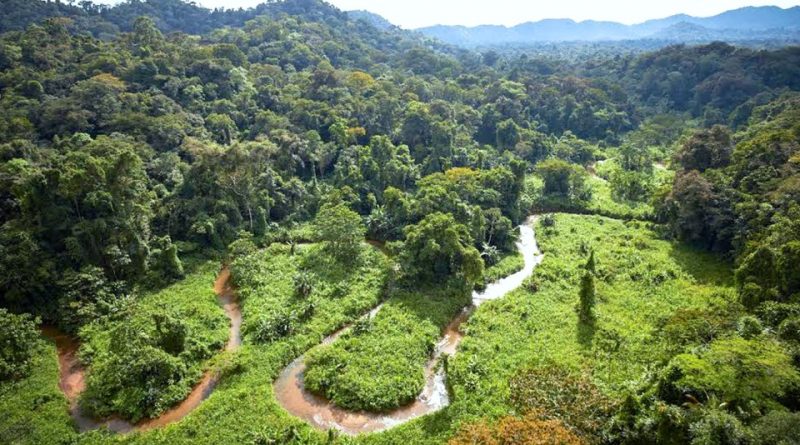Biological Reserve of the Río Plátano
Biological Reserve of the Río Plátano
The Río Plátano Biosphere Reserve is an area located in eastern Honduras, in the Mosquitia region. Created in 1980, it is the first nature reserve in Central America, subsequently included in the list of UNESCO World Heritage Sites since 1982.
This area is located between the tropic of Cancer and the equator, near the desolate Costa de Mosquitos, in spite of the rainforests south of the reserve that have been largely deforested and where entire hills have been stripped of precious mahogany wood .
The Río Plátano biosphere reserve is one of the few areas of Central America where the rainforest still exists, it includes almost all the Río Plátano basin, from the coastal lagoons to the mountains where the river is born. To the variety of territorial morphology are added a wide range of ecosystems rich in biodiversity: there are still monkeys, tapirs, giant anteaters, turtles, felines, and many animals threatened by the deterioration of their habitat. This deterioration is due in large part to the difficult control of the territory by the State to maintain security and the presence of illegal occupation and the progressive deforestation for commercial uses. In its mountainous landscape sloping down towards the Caribbean coast, over 2,000 natives have preserved their traditional way of life.
The Río Plátano biosphere reserve is the largest protected area in the country with 350,000 hectares. The protected area, which includes the entire watershed of the Rio Plátano, from the sources of the mountain to the mouth of the river on the Caribbean coast, is an integral part of a significantly larger conservation complex that includes the Tawahka Asangni Biosphere Reserve and the Patuca National Park. This area of Northeastern Honduras is contiguous with the Bosawa Biosphere Reserve in neighboring Nicaragua, together forming the largest contiguous forest area in Latin America, north of the Amazon. In addition to the notable dense mountain rainforests, there is an extremely diverse range of distinct ecosystems in coastal plains, including wetlands, savannah and coastal lagoons. Recognized as a gem of nature conservation, the property also hosts notable archaeological and cultural values, with numerous pre-Columbian and petroglyph sites, as well as the living cultures of the various local and indigenous communities.
Indigenous peoples and peoples of African origin can be found inside, including the Pech, Tawahka, Miskito and Garífuna, who live alongside the Mestizo (Ladin) population.
The site boasts an extraordinary diversity of ecosystems and species. For example, 586 species of vascular plants have been reported in the lowlands of the reserve. The more than 721 species of vertebrates comprise more than half of all mammals known in Honduras and include the Mexican monkey, endangered spiders, the endangered Central American tapir, the vulnerable giant anteater and the western Indian manatee, as well as the almost threatened jaguars and white-eyed pècari. Among the endangered birds we mention the large green macaw, the vulnerable Hocco major, the crested eagle and the harpy eagle which are only a part of the 411 species of documented birds. Finally, reptiles and amphibians are mentioned, which together amount to about 108 species, with different species of poisonous snakes and 4 species of sea turtles (Common sea turtle, Loggerhead turtle, Green tortoise and Hawksbill turtle). Freshwater fish include the Joturus pichardi or the Cuyamel, migratory and economically important.

